These little ducklings appear to be Rouen and Ancona crosses. There is not a single pure Khaki there. The white drake is looking on and making some comment about the new additions to the farm and mamma duck is scolding him. The babies are swimming in a tote lid, but the water has become muddy from the other ducks. It will be interesting to see how these babies turn out. Welcome little ones!
|
Khaki Campbell ducks are not known to go broody, and as a matter of fact, it is rare for one to do so. I am fortunate to have had one raise 8 ducklings last year and this year, one with 7. I locked her in a hoop shelter with her nest so she could bond with the babies. Sometimes the mommas just forget about them and the time spent with just her babies helps the bond become strong. After a week, I let them out. There is a threshold on the hoop shelter that was too large for the babies to climb out of, so I made steps of wood logs, which worked perfectly. It is late in the season for babies, with only a few days of summer left, but she is not alone. The Muscovy girls just hatched their ducklings, nine beautiful babies, and one mamma hen hatched a single. She went broody with just a few eggs, but only one was hers. There is another hen with 7 babies a week old and still another duck sitting on a nest and 3 more hens as well.
These little ducklings appear to be Rouen and Ancona crosses. There is not a single pure Khaki there. The white drake is looking on and making some comment about the new additions to the farm and mamma duck is scolding him. The babies are swimming in a tote lid, but the water has become muddy from the other ducks. It will be interesting to see how these babies turn out. Welcome little ones!
0 Comments
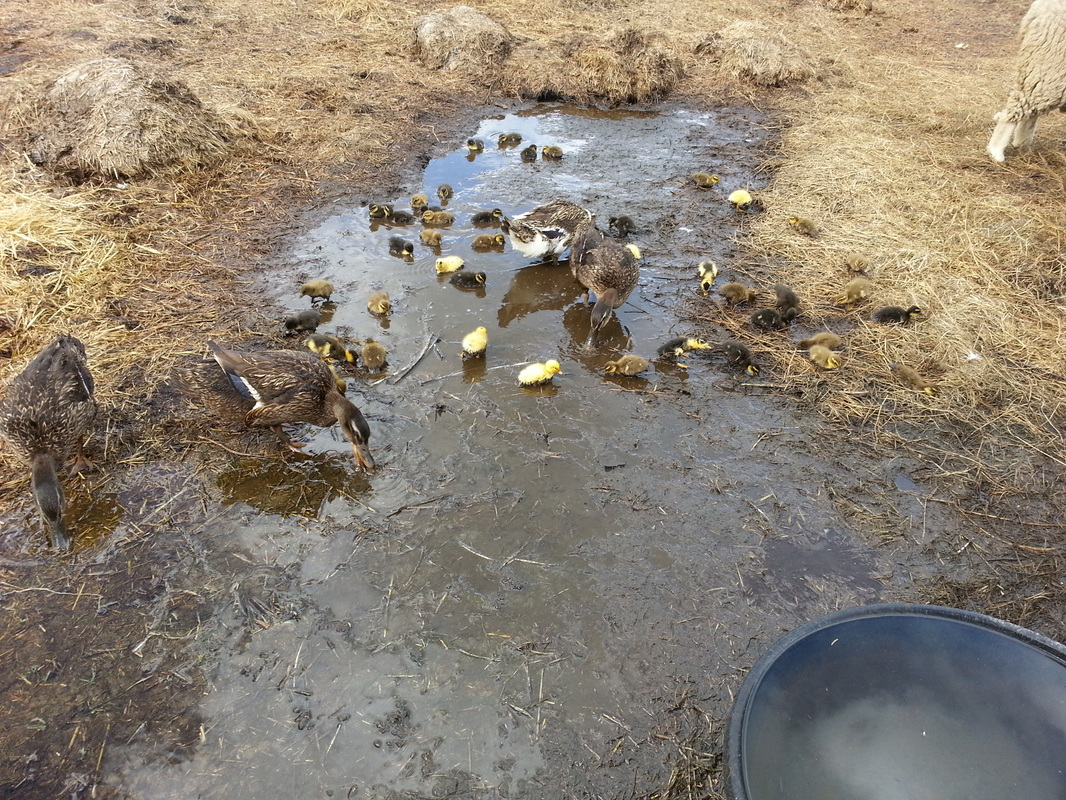
Four Rouen hens, well, three because one is a Rouen cross, sat on four nests and hatched forty something ducklings and one chick, a a little black bantam, most likely a rooster because it is all over the place faster than a lightening bolt. I don't know how it will survive because duck moms do not stop to warm their babies very much, not as much as chicks require. It is a few days older than the ducklings, which will help. Can you spot it?

the all yellow ducklings will be pure white and are most likely Khaki Campbells. The yellow with black are Anconas, the light fawn are Khaki Campbells and the dark ones with eye stripes are Rouens, but there are also Saxony mixes in the bunch. There is not Saxony drake present at this time, but three ducks do live on the farm. Welcome little buddies.
There are three boy goats on the Fat Ewe Farm. Little Colby was born here last year and cannot be used for breeding, but he does have very nice fibre. He will be shorn in the fall and likely used to breed the Pygmy and Nigerian Dwarf goats. Leo bred the does this year and the Pygoras and Nygoras are his progeny. He will either be sold with the two Angora girls (number 13 will stay) as a breeding trio, or be sold for meat after shearing. Such is the lot of the males. Little Raven was Weezie's twin boy, a very small goat because Weezie was not well. Raven was given many shots of vitamins to boost his system and he has turned out rather well with a sleek black coat and cute little body. He remains very friendly and warm and would also make an excellent breeder with any of the does, since he is not related to them. If he was a little bigger, he might be able to breed the Angora girls. I will be picking up a pure bred Pygmy buck this summer though, and breeding the does to the Pygmy rather than the Angora. Pygora and Nygora goats are not popular here and the males are left. There were so few girls born this summer. The Pygmy can also breed the Angora goat, number 13. Hopefully she will have twin girls and one buckling from this year, a special little Nygora, can breed the girls the following year, Nygora to Pygora. One more breeding of Pygmy to Angora and the Angoras are done here. The only one kept will be 13 for her mohair, but after a few years the mohair becomes coarse and is not soft anymore, so they are used for breeding then more than fibre. Leo is a good looking guy, weighs about 150 and has a great coat. He is 2 and he is for sale. Colby, last year's buckling is also for sale.
After so much rain for the past month, with the ground being muddy soup everywhere and the mosquitos and flies more prevalent because they can breed so quickly, today was a sunny day, finally. But it was super hot, 27 degrees Celcius, or almost 81 degrees Fernheit. The heat was one thing, but the humidity was the other.
After the morning chores I settled down for coffee and breakfast, though breakfast never really arrived. I could hear a little kid goat crying and crying and the goats had been getting through the old fence in the weak spots, so I thought I should investigate. Sure enough, they had busted through again. An old tree had fallen on the wire giving them a clear path to the other side where it is always better than the side they are supposed to be on. So, I heaved and hoed and finally moved the log, pulled the wire up, got a stick and propped it up like a post to rest the wire on and went back inside. But that kid kept crying and I went out to find him. He was stuck on the right side of the fence this time because the goats that were out were ushered through the main gate and back to their pen leaving him behind. Robbie and I went in the bush and led him back to where he could find his way home. Kids these days, really. I went back in to have breakfast and realized I had not seen Georgie, the crippled lamb, go out with the rest, so we went to look for her. She was nowhere in sight and I hoped she would be found by night, but Robbie and I searched the bush, especially where we found her last night, and had no luck. Poor Georgie. Wherever she is, I hope she makes it through until morning. There are many predators in the woods and the dogs do their best, but she cannot run at all, so would not fare well. Bless you little sweetheart baby girl. Stay safe until morning light. I went out to do a little gardening, however the humidity was unbearable and sweat was pouring off me. Staying in the sun was not an option. I got two rows of mulching done and decided to go inside. I had long given up on breakfast and decided two fresh mangos from the case I bought yesterday would be a tasty treat. I answered some emails and did not too much for a while during the hottest part of the day, went out and cleaned the water bowls and refilled them. The ducks and geese foul the water as soon as it is poured and the goats especially do not like to drink dirty water. There are 5 ducks sitting on nests and a Saxony building one that already has 7 eggs, so soon to be 6 sitting ducks. The Ancona built a nest and began her sojourn today and the Rouen ladies began several days previously. I don't think the Saxony is far behind. That will be a lot of ducklings, if they all survive. Something has been picking off the goslings, the raven perhaps, so we are down to 14 from 28, half. The other Muscovy duck not sitting has her nest ready to go and is all huffy, but I gave her 14 Guinea eggs to hatch because there are plenty of ducklings already under way, including the other two Muscovies who are sitting on their own eggs. It was a quiet hot and muggy day with not much production, but some days are just like that. Now, time to hit the hay. Goodnight and Bless you all. Sweet dreams. 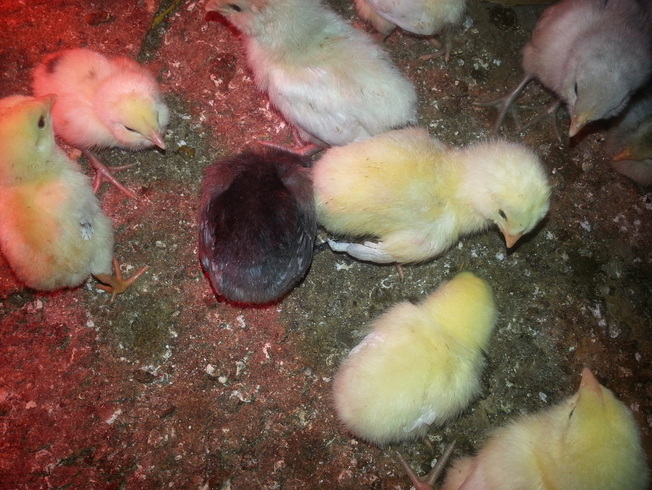 Gosh ducklings and goslings are cute! The last of the hatch was out today, with just a few goose eggs to go. The eggs were collected early in spring when the temperatures were still very low and although they were likely fertile, they were not viable. The ducks laid in their shelter and the chickens in their nesting boxes, but the geese were laying outside in makeshift nests. Unfortunately, most of the eggs got chilled and only two geese out of 50 eggs hatched. There are four geese setting now though, and each has a dozen or more eggs, so most likely, many of those eggs will hatch. The geese adults all care for and protect the young goslings. Last year, the gaggle raised 5 mom hatched little gaffers and they all went into the freezer. This year, if the eggs all hatch, which is not likely, but possible, there will be more than 40 goslings. It will be more difficult to protect the babies from arial predators, particularly the ravens. I am not sure how to handle that, not wanting to lose the young ones, but at the same time, wanting to allow the gaggle to look after and raise their babies. Only Robbie, the border collie, chases the ravens off. The other livestock guardian dogs do not much bother with them, unfortunately. Two goose eggs pipped, that is the baby broke through the shell, but they have been in the shells too long now, and likely will die in the shell. It is usually not a good idea to liberate the hatchlings either, since they often die shortly after, especially if they are stuck to the shell or membrane and bleed from being released. There are a dozen more goose eggs still in the incubator due in a few days. Then hatching is pretty much over for this year. A hundred chicks and about 25 ducklings, plus 5 turkeys made it, and so far, just two little goslings. They are all living in the granary aka brooder house with two heat lamps (in case one light burns out in the night or anything else ). During the day, if it is good weather, the granary door is open with a wire cover in place to keep cats and ravens out, so the birds can get some fresh air and see outside. In a few weeks they will be transferred to separate pens, one for the waterfowl and the other for the chicks and turkeys. There they will remain until they are well on their way to adult hood and have gained the ability to fend off predators and watch for themselves, usually about at four months old. The males will be sent off to the processor at five months, and the females sold as laying hens or kept for breeding stock and laying hens for the farm. Then next year, the cycle will go on. That is the way of the hatch.  The first hatch is underway. The cost of keeping birds is much less than buying hay for sheep and goats, and the eggs, chicks and adult bird sales far outweigh their upkeep. That is not so with the other animals on the farm, but at least something breaks even! The incubators are not mine, but belong to two different friends. I am splitting the hatch with one friend and the other gets his pick of the birds, so it is a win win situation for me and for them. About 40 mixed duck eggs, Rouen, Saxony, Ancona and Khaki Campbell, plus Muscovy, and 15 Standard Bronze turkey eggs, 18 mixed geese, Tufted Toulouse/Embden/Pomeranian, and chicken, Ameraucana/Partridge and white Chantecler and a few others plus bantams are all in the incubator with the chicks due on April 26 and the waterfowl on May 3 and 5. Muscovy ducks take the longest to hatch, followed by the geese then ducks and chicks the shortest, at 21 days. Some of the hatch has been presold already. About the same time, or a bit later, the farm will be receiving an order from Performance Poultry with specialty birds so there will be waterfowl and chick brooders set up and ready to go. Three separate hatches will be made, with approximately 80 eggs per hatch. After that, if there is still interest, the hatch will be set by order only. Unclaimed birds will be raised and either sent to the processors or kept for layers or for sale as adult birds. In the summer the feed bill is very low because the birds free range and basically feed themselves. This year, the numbers of adult birds are too high for the small farm yard, so they will out to pasture with the sheep so the dogs can also watch over them. With the new fencing, it will be easier to pasture the birds. The fliers go where they wish anyhow, so basically it is the ducks and geese and a few of the chickens that will need supplemental grazing. The benefits of raising the birds are many from fresh pastured eggs to bug control to delicious dinners. And to think that when I began this venture three years ago, I had a terrible bird phobia and could not touch a bird, not even a newly hatched chick, let alone go in a coop. Now I can, though the odd time, I still get prickles on the back of my neck when the birds fly by my head. I actually like them now, especially the comical ducks. They are my favourites, hands down. The egg pictured is from a Standard Bronze turkey, and I even like them. 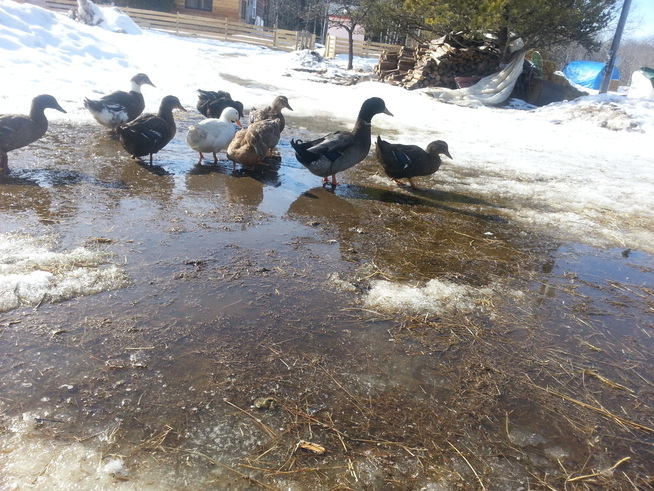 If there is one thing that ducks love, it is water and with the warm temperatures, the snow is turning into puddles. The ducks love that! They are in their glory splashing and dunking and playing in the water, but today, they were able to get some mud at the bottom, so they were extra ecstatic. The big Rouen drake was out taking his ladies for a walk about. There were puddles everywhere to their absolute delight and of course, they sampled them all. The geese decided to venture further and went out to the driveway on the other side of the fence, but the snow has not turned into puddles there yet, so they ambled back. The goose sold as the male Saddleback Pomeranian is female and one of the females is a male. That was quit evident today, because geese love to mate in shallow water. The gander from last year did not want to share any of the ladies, though, and quickly turfed the newcomer out. The one that was supposed to be the gander is nesting, but she will have to relocate because where she wants to be is not a safe place out of the elements. In a few days, the barrel nests will be able to be moved and she will have a great place to lay her eggs and have little ones. It is so wonderful to enjoy the warm temperatures after that bitterly cold winter. Yup, spring has sprung.  Late last summer, I bought 11 Ancona ducklings from a local person. There were of various ages, and only 2 survived, a male and a female. The male died in the bitter cold winter, curled up under his wing and simply frozen, but the female is strong and healthy. She does mix well with the other ducks though.There are Khaki Campbells, Rouens, Saxonys and Muscovys, but she tends to be on her own quite a bit. I would love to find her a mate and raise some more Ancona ducks. Last summer, the Ancona ducks ate more flies than any of the other breeds, hands down. For that reason alone, I would like to raise them, because on a farm, there are always too many flies. They are really pretty and apparently are great egg layers too. Hopefully, she will start to lay soon and I can find her a mate. Isn't she pretty? 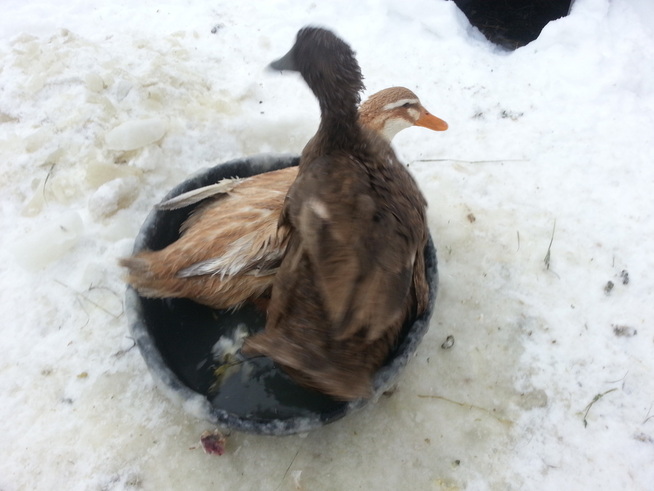 A Saxony hen on the left and Khaki Campbell on the right vying for the hot tub. A Saxony hen on the left and Khaki Campbell on the right vying for the hot tub. I absolutely LOVE the ducks! For hours on end, I can stand and watch them conversing with each other, scolding, picking, fighting, waddling and bathing. Bathing in winter is particularly interesting. I do not give them much water when it is cold, only a bucket in which they can dip their whole heads in to clear their eyes, which is mandatory, and a small, shallow pan, which was supposed to be for the chickens. The geese and ducks will go to the bucket and dip their heads in, flapping their wings as though they were in a shallow pool, and spread the water by throwing it onto their feathers. Of course, in these frigid temperatures, the water freezes instantly. This is not bad though. The ducks and geese will then spend an hour preening, that is spreading the oil from a gland through their feathers, which further waterproofs and weatherproofs them. They are well insulated and can lay on the ice and snow if they tuck their feet up into their feathers, which they do. The feet of the waterfowl are more sensitive to the cold, it seems, than the chickens, though neither like the very cold weather. The Fat Ewe Farm has some interesting rare breeds of ducks. Of 11 ducklings purchased in the summer, only one female Ancona remains. The Ancona is a black and white duck, somewhat flighty and crazy, but absolutely the best foraging duck on the farm. I would like to try a few Runner ducks, one of the breeds from which the Ancona was derived to compare their foraging abilities, but more so, I would like to find a mate for the Ancona duck and see if I can raise some of these amazing little critters. There are three Saxony ducks but no drake there either. The Saxony is a pretty buff coloured duck with buff and white eye stripes. They lay eggs well from early spring to very late fall and are larger than many duck breeds, so make a nice table duck. I am searching for a non related Saxony drake for the spring. The Rouen is coloured as the wild Mallard from which it is derived, though it is a very large duck. They lay a great deal of eggs and are good at feeding themselves if given the opportunity. There are three ducks and drake of the Rouen breed. Khaki Campbell ducks were my first experience with waterfowl and I really loved them. They are crazy skitterish and will fall all over themselves to get away from me, but when I am not moving towards them, they will also come and see what I have and run all over my feet. They detest being picked up and so far, I have not tamed a single one. The second year, a duck got injured and was secluded. She nested and hatched 8 babies, and that is rare for Khaki Campbells. Maybe the secret is to sequester them away so they desire to set the nest rather than run and play. The Campbells were bred to lay eggs, and that they do extremely well. There are some other ducks living at The Fat Ewe Farm, but they are crosses from the ducks here, mostly Rouen, Campbell crosses and only the females are here, about five of them. I would love to try the Dutch Hookbill, Blue Swedish, and Aylesbury, the finest table duck ever bred, along with some Runner ducks. That will be a project for the summer, to try to locate pairs of these. Oh yeah, there are also four Muscovy ducks. These are large flighted ducks from South America originally, well, not these particular ones, but the breed is. They do not quack or make noise, but rather make a funny sound like a person with harsh laryngitis. They do not like the cold and do not far as well as the ducks descended from the Mallards, which is basically the rest of the ducks. There are three ducks and one summer baby that appears to be male. Muscovy ducks are constantly broody even at the sake of their own health. Last summer one duck spent three months under buildings trying to hatch ducklings. Finally, I tore up the nest and threw the eggs away, which were long overdue and bad, and she was locked up with the rest of the ducks. Muscovies will hatch the eggs of any duck or chicken though, so they are very valuable that way, plus they are supposedly tasty with very dark meat, but I have not eaten one. Duck eggs are three times more nutritious than chicken eggs and when they are plentiful, I won't touch the chicken eggs. They just do not compare. The ducks are fed minimal grain in the summer and have the run of the farm yard to eat grass, which they a lot of, dandelions, their favourites and bugs, flies and even the odd young mouse of vole. I am looking into alternatives for not feeding grain to the birds at the Fat Ewe , but I am not sure yet how that will work. In the meantime, I love those duckies! They put a smile on my face every time. 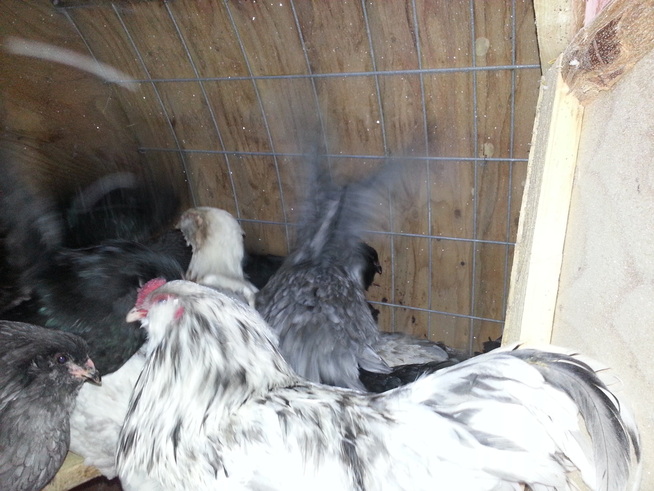 The Ameruacanas prefer this coop. It is two livestock panels covered with plywood and a tarp over that. They are on perches a little higher than midway and seem just fine. It is actually warmer in there than outside due to the design and the number of birds, which emit enough body heat to raise the temperature slightly. The Ameruacanas prefer this coop. It is two livestock panels covered with plywood and a tarp over that. They are on perches a little higher than midway and seem just fine. It is actually warmer in there than outside due to the design and the number of birds, which emit enough body heat to raise the temperature slightly. This is day 5 of extreme cold temperatures. The ducks have wads of poop frozen to their butts, because when they sleep, they poop and it freezes instantly to their feathers. Bathing in the icy water does not thaw the poop enough to remove it. If the wad grows too large, the ducks have to be submerged in warm water, brought from the house, to thaw the poop, or it could obstruct further poops. Gross! The chickens roost up higher, so they do not have that issue. The geese do, though, but not as bad as the ducks. Tomorrow the temperature is supposed to go all the way up to minus 25, whoo hoo. I will definitely have to bring warm water for the ducks several times to thaw those bottoms. I noticed the fat tailed Karakul sheep, Dora, has been off by herself the last two days. I did not see anything amiss with her, but today there was some blood near her tail so I grabbed her and had a very close inspection. Her tail, that is the inside of it, was missing - gone!. The skin was flapping without the tail. It is not the way the dogs or coyotes normally would eat a tail and has me puzzled. I think the livestock guardian puppies must have eaten it somehow from the top to the inside, but why would she have allowed that to happen? Dora is a submissive sheep. So I moved Dora in with the Icelandics, away from the pups. I did not see any blood on the pups either, which is strange. I am miffed and so sorry for Dora. How painful that must have been, whatever it was, that ate her tail while she still had it on her. Now, what do I do with the remainder? Oh, yes, and the rest of the animals are doing OK. The three Blue Faced Leiscester sheep have been treated for pneumonia, but one was still shivering today. I will have to call the vet again and see what I should expect from the very expensive drug he gave her. The other Dorset ram lamb that had diarrhea was treated at his farm prior to his arrival, but maybe he was missed. I have been in a dialogue with the previous breeder. If he kept good records, he might be able to tell me more. I will have to take a fecal culture to the vet and find out what his problem is and get it fixed so the other sheep do not contract it. He and his wife are confined to a small enclosure pen away from the sheep, but the llamas are on the other side. They do not have fence contact though. And, the rest of the birds, the guineas and other chickens are just trying to stay warm, which is not easy when there is no let up in the frigid cold this week. Brrrrr. |
Categories
All
AuthorFluffy writes daily about the experiences on the farm and with the bed and breakfast patrons. Archives
October 2020
|



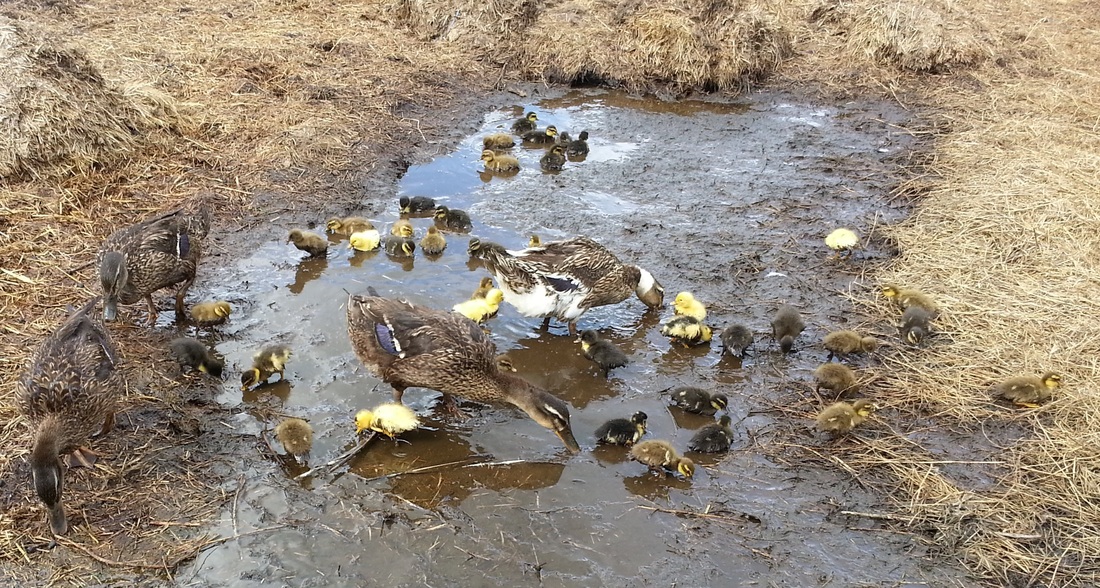

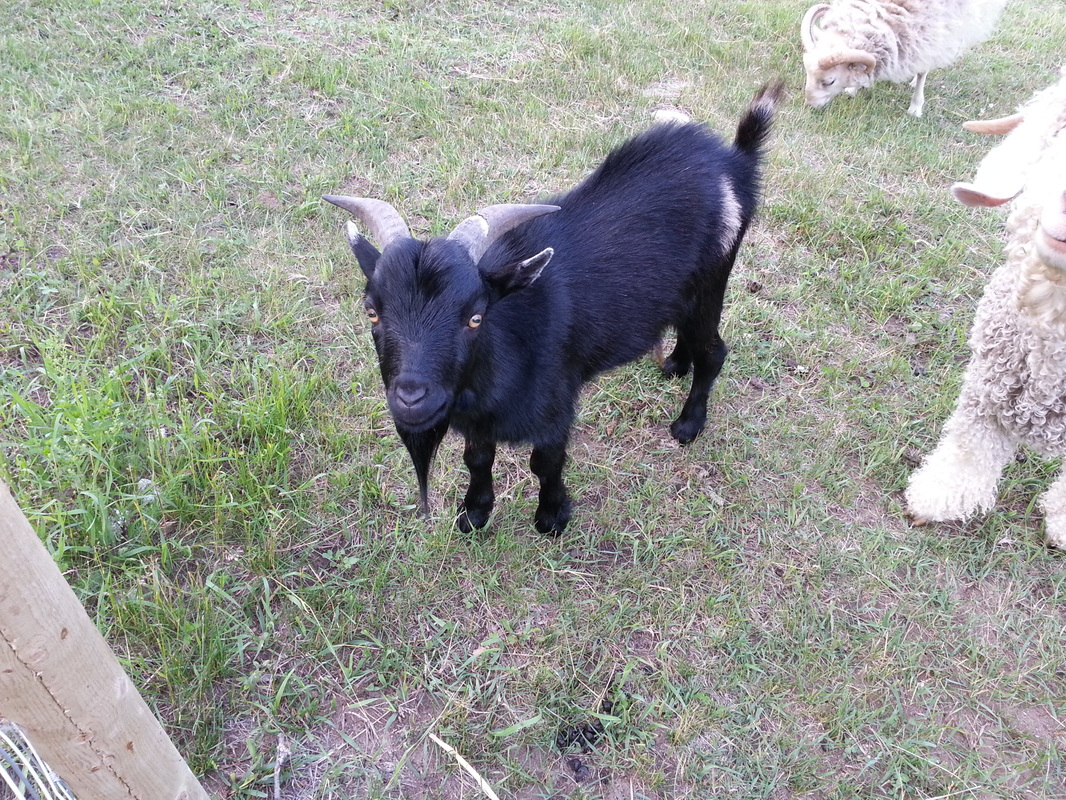
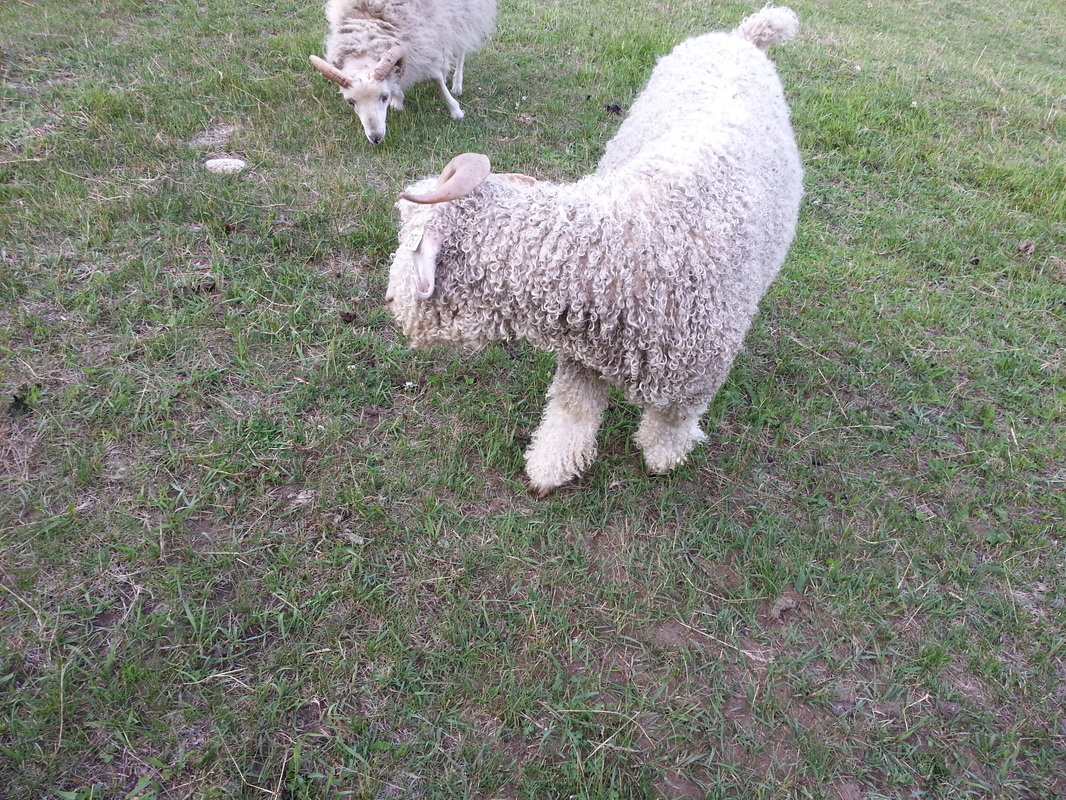
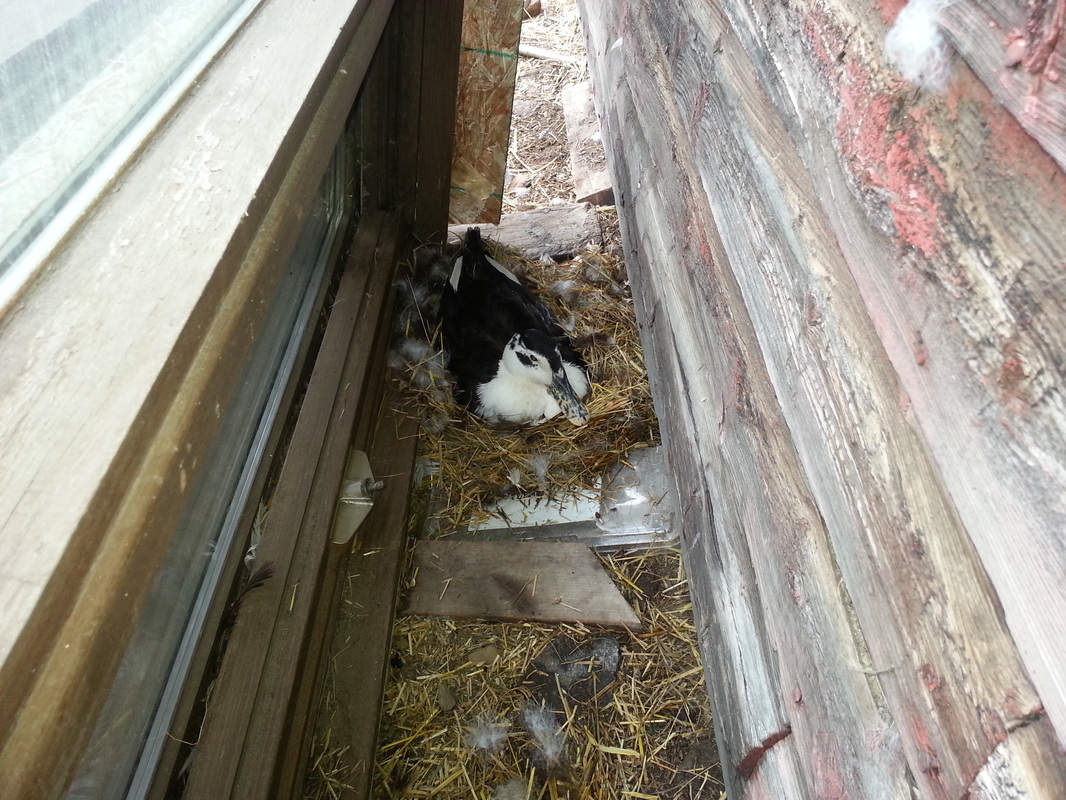





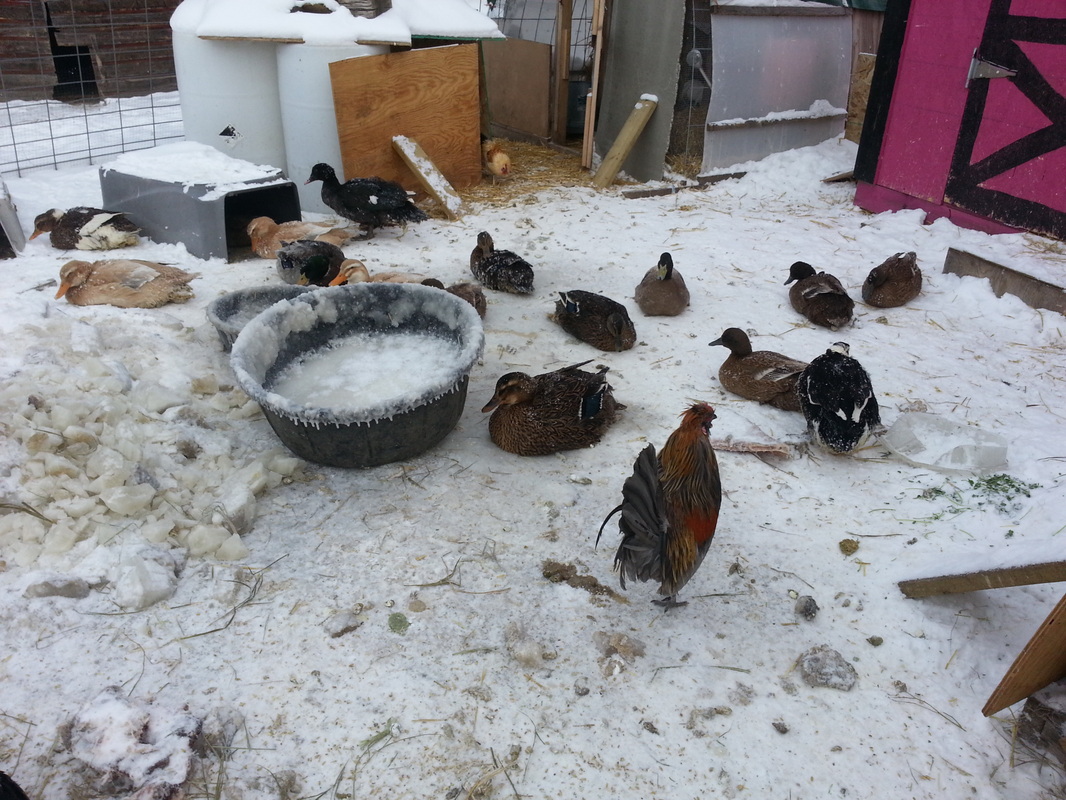
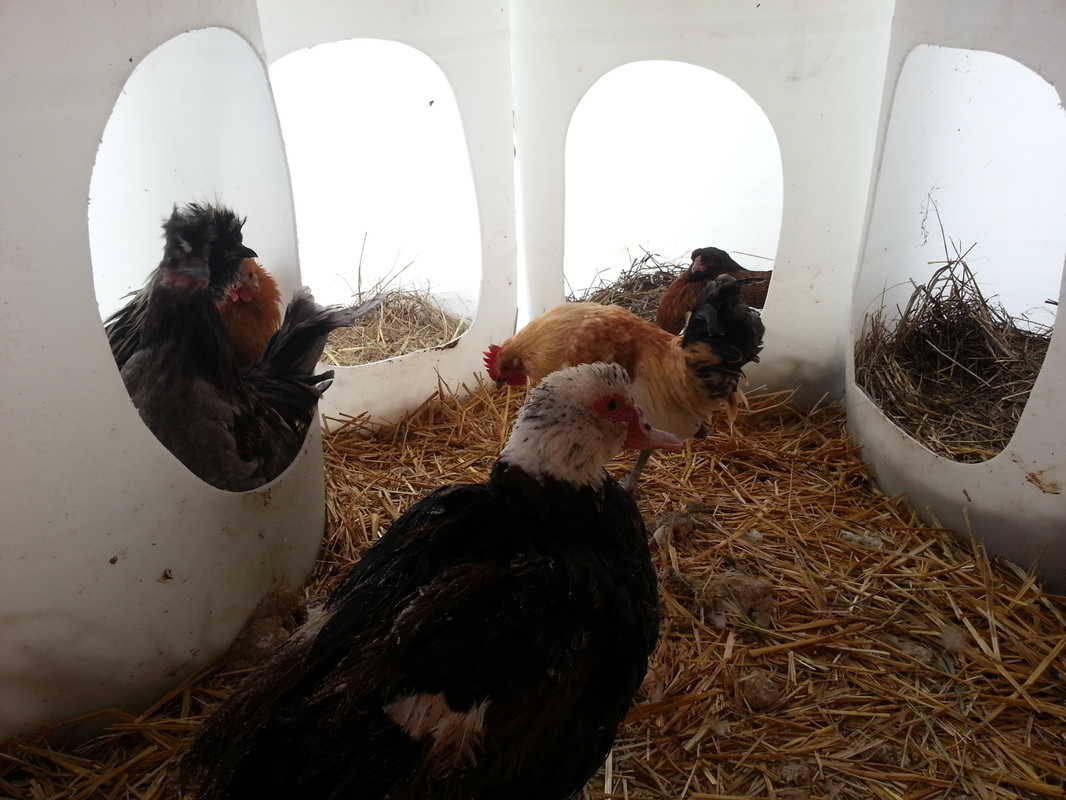

 RSS Feed
RSS Feed